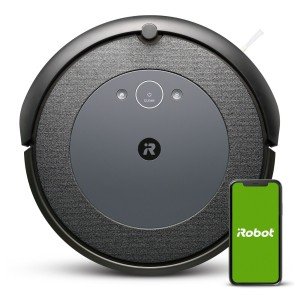15 Gifts For The Floor Robot Lover In Your Life

Understanding Floor Robots: The Future of Home Cleaning
Recently, technological advancements have considerably transformed the landscape of home cleaning. Among the most notable developments is the floor robot, a device that has rapidly gained appeal for its convenience and effectiveness. This short article aims to explore the various elements of floor robots, their functionality, benefits, popular models, and some frequently asked concerns to help consumers make notified decisions.
What is a Floor Robot?
A floor robot, commonly described as a robotic vacuum, is an automated gadget designed to browse floors and eliminate dirt, dust, and particles. Unlike standard vacuum cleaners, floor robots operate autonomously, providing a hassle-free cleaning experience. These smart makers use sensing units, mapping technologies, and advanced algorithms to clean numerous surfaces, consisting of wood, tile, and carpet.
How Do Floor Robots Work?
Floor robots operate through a mix of software and hardware elements. Here are the essential features that enable their functionality:
1. Sensing units
- Challenge Detection: Floor robots have integrated sensors that help them discover challenges, permitting them to browse around furniture and avoid falls.
- Cliff Sensors: These avoid the robot from falling down stairs or ledges by recognizing changes in elevation.
2. Navigation and Mapping
- Visual Mapping: Some innovative designs employ video cameras and laser innovation to develop comprehensive maps of the cleaning area.
- Simultaneous Localization and Mapping (SLAM): This strategy assists the robot track its location and successfully plan its cleaning route.
3. Cleaning Mechanisms
- Suction Power: Most robotic vacuums utilize a suction system to capture dirt and dust, which is then stored in an onboard dustbin.
- Brushing Systems: Many designs come equipped with turning brushes or mops for enhanced cleaning capabilities, particularly on carpets or difficult surfaces.
4. Smart Features
- Connection: Many floor robots support Wi-Fi connectivity, enabling users to control them by means of mobile phone apps or smart home systems.
- Scheduling: Users can schedule cleaning times, guaranteeing their homes are tidy even when they're not there.
5. Self-governing Charging
- Self-Docking: Most robots automatically return to their charging station once their battery runs low, guaranteeing they're constantly ready to clean.
Benefits of Using a Floor Robot
The adoption of floor robots includes numerous advantages that make them appealing to users:
1. Convenience
Floor robots can clean up while users address other tasks, enabling multitasking and time-saving.
2. Increased Efficiency
Robotic vacuums often cover more ground in less time compared to standard techniques, thanks to their methodical cleaning patterns.
3. Constant Cleaning Routine
Users can set up regular cleanings, making sure that their homes stay clean without requiring daily intervention.
4. Ease of access
Robotic vacuums can easily access hard-to-reach locations, such as under furnishings or in tight spaces.
5. Advanced Features
Lots of models come equipped with features like voice control and app integration, boosting use and availability.
Popular Floor Robots
When thinking about a floor robot, various brand names and designs cater to various needs and spending plans. Here's a short overview of some leading alternatives:
| Brand | Design | Secret Features | Price Range |
|---|---|---|---|
| iRobot | Roomba i7+ | Smart mapping, self-emptying dock | ₤ 600 - ₤ 800 |
| Roborock | Roborock S7 | Sonic mopping, challenge avoidance | ₤ 500 - ₤ 700 |
| Neato | Neato D7 | D-shape design, advanced suction | ₤ 600 - ₤ 800 |
| Ecovacs | Ecovacs Deebot T8 | Mopping function, advanced mapping | ₤ 600 - ₤ 800 |
| Shark | Shark IQ Robot | Self-emptying base, home mapping | ₤ 400 - ₤ 600 |
(Note: Prices may vary based on retailers and ongoing promos.)
Regularly Asked Questions (FAQs)
1. Are floor robots efficient on carpets?
Yes, many modern-day floor robots are designed to clean different surface areas, including carpets. Designs with strong suction and rotating brushes are particularly reliable at selecting up animal hair and ground-in dirt.
2. How typically should I run my floor robot?
This depends upon your family's requirements. For homes with family pets or high foot traffic, day-to-day or every other day cleaning may be beneficial. For automatic vacuum , running the robot once a week might suffice.
3. Can I control my floor robot from another location?
Many floor robots come with smart device apps that allow users to control their devices from another location, schedule cleansings, and display performance.
4. Do I need to empty the dustbin frequently?
A lot of robots require regular emptying of the dustbin, especially in homes with family pets or heavy soil. However, some designs provide self-emptying abilities, which reduce user participation.
5. Are floor robots appropriate for all kinds of flooring?
A lot of floor robots work on different surface areas, consisting of hardwood, tile, and low-pile carpets. However, some might perform better on specific surface areas, so it's vital to pick a design fit to your home's needs.
As households continue to welcome technology, floor robots have actually become essential cleaning companions, supplying convenience, efficiency, and advanced functions. Comprehending their performances, benefits, and available designs permits customers to pick the right floor robot to satisfy their particular cleaning requirements. By purchasing this innovative technology, property owners can guarantee their living spaces remain tidy and comfortable with very little effort.

